
Bougainvilleas: the most beautiful varieties
Our favourite varieties
Contents
Bougainvillea: a must-have for any gardener enamoured with gardens evoking the south and the Mediterranean! Its flowering is always spectacular, both for the intensity of colours, the profusion of flowers, and the duration over which it extends. Native to Brazil, these climbing bushes have deciduous to evergreen foliage depending on the species and varieties, and their long stems allow gardeners to guide them over arches to mark a villa entrance, over pergolas to flower and shade terraces in the warm season, or to climb along facade walls or fences to brighten up homes and streets. Everyone has the purple of bougainvilleas in mind, but their summer flowering can vary in multiple shades, ranging from purple to white, yellow to bright orange.
If choosing from our different varieties of Bougainvillea leaves you in doubt, follow our advice: we have selected 5 top bougainvilleas for you!
Bougainvillea 'Violet de Mèze': the most resilient
When discussing bougainvillea, the question of hardiness immediately comes into play. Indeed, for those who are not fortunate enough to live in the famous “orange zone” – which stretches in France from the east of the Côte d’Azur to Menton and Corsica – cultivating this sarmentous plant, native to the tropical forests of Brazil, is either utopian or reserved for potted plants that must be wintered during the cold season.
The Bougainvillea ‘Violet de Mèze’ stands out for its greater resistance to cold. This variety has been produced and propagated from a specimen found in Mèze, in the Hérault department (hence its name), although its origin remains a mystery. When planted in the ground at the foot of a south-facing wall, the Bougainvillea ‘Violet de Mèze’ will be quite hardy and can withstand temperatures down to -8°C. It will simply need to have its stump protected during the first few years until it becomes well-established. Thereafter, if temperatures were to become truly freezing, the aerial part would be affected, but your bougainvillea would regrow without issue from the base.
Full sun exposure is important so that it can benefit from warming as early as spring and be vigorous and highly floriferous. The growth rate of this bougainvillea is spectacular, and if you want to assist it, remember to water it in summer and regularly provide compost or a specific fertiliser.
Finally, there’s no need to panic at the leaf drop: it is deciduous and loses its leaves in winter, around December-January. It prefers rich, well-drained soil that is not too calcareous to develop its long sarmentous stems and reach a spread of 2 to 3m and a height of 5m. It is covered in an abundance of deep purple bracts for many months: from May to September, sometimes longer depending on its location and the climate it enjoys.
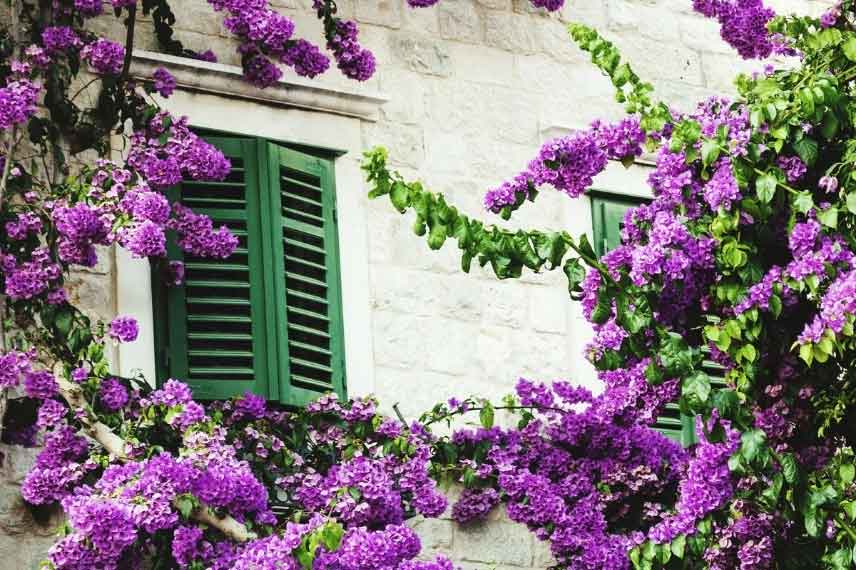
Bougainvillea ‘Violet de Mèze’
The Spectabilis White Bougainvillea: a marvel of purity
If bright colours are becoming tiresome and you crave purity and simplicity: consider this wonderful Bougainvillea spectabilis ‘Blanc’. Bougainvillea spectabilis are vigorous climbing bushes with rapid growth: they can reach 5 to 8m in all directions. This white variety is stunning and this colour is rare among bougainvilleas. The vigorous woody climbing stems bear hooked thorns that allow the plant to cling, along with countless pure white bracts veined with green at the base and rather evergreen leaves depending on the growing conditions.
It will require a protected microclimate: full sun, no cold winds, and frost below -5°C, as well as light, well-drained soil where it can withstand drought once well established. It can then colonise a pergola or trellis, adorn a south-facing wall, and amaze you with its long, fresh, and pure flowering!

Bougainvillea spectabilis ‘Blanc’
Discover other Bougainvillea
View all →Available in 0 sizes
Available in 3 sizes
Available in 1 sizes
Available in 1 sizes
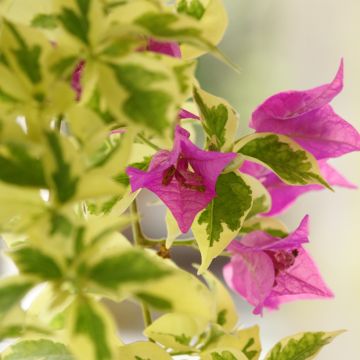
Available in 1 sizes
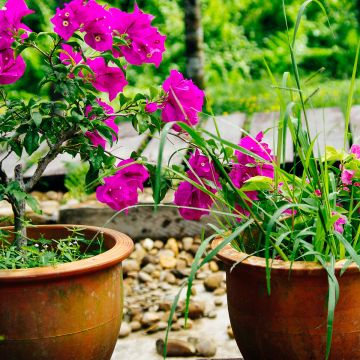
Available in 2 sizes
Available in 1 sizes
Available in 1 sizes
Available in 1 sizes
The Yellow Bougainvillea spectabilis: sunshine under the sun
This variety, of the same species as the previous one, is a worthy symbol of the solar star it needs so much to thrive! The Bougainvillea spectabilis ‘Yellow’ will delight you with its bracts – all just as countless – in golden yellow, and will illuminate any wall it is trained against! This colour, in striking contrast to the dark green foliage, will work wonders alongside white, light yellow, and orange shades, unless you prefer a more contrasting combination with lavender hues.
Negative temperatures of -5°C are the coldest it can withstand without damage. Below that, it would be harmed like other varieties of the species: you will then need to settle for growing them in pots to be able to winter them.
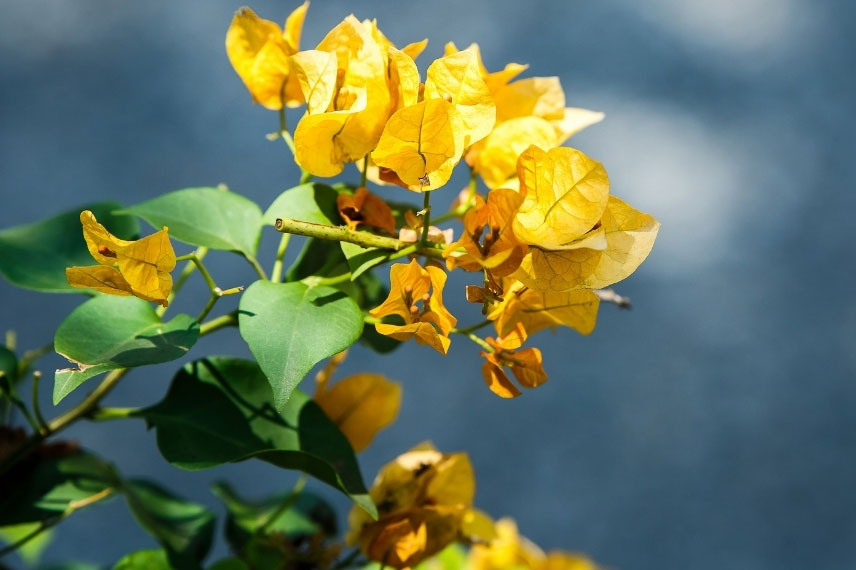
Bougainvillea spectabilis ‘Yellow’
Read also
When and how to prune Bougainvillea?The Orange Bougainvillea: flamboyant!
This variety of Bougainvillea spectabilis boasts a stunning fiery orange. Bougainvillea spectabilis ‘Orange’ is just as impressive as the previous ones: it requires the same growing conditions and produces the same profusion of flowers – in fact, colourful bracts surrounding tiny white flowers at the centre. The colour of this wonderful representative of the Nyctaginaceae family is warm and bright, far from the stereotypes of purple bougainvillea. Once again, it can be paired with a palette of whites, creams, canary yellow, and golden yellow, as well as red tones, or with acid green shades like those of Euphorbias or grey-green tones like some grasses. A marvel for climbing over a pergola or brightening up a dull wall!

Bougainvillea spectabilis ‘Orange’
Bougainvillea glabra 'Sanderiana': dare to embrace colour!
An essential semi-evergreen species of bougainvillea for southern gardens! It is indeed the Bougainvillea glabra ‘Sanderiana’ that is frequently encountered, adorning fences, facades, and arches around the Mediterranean. And for good reason: it is extremely floriferous and easy to care for, provided you give it the essentials: plenty of sun and temperatures above zero degrees, even in the heart of winter.
If you’ve fallen under its spell but can’t plant it outside, choose a beautiful large pot and suitable soil to grow it so you can protect it in winter. You will need to ensure it is watered and pruned regularly to maintain a reasonable size, which it will tolerate without issue as it is the most commonly used species for bonsai cultivation.
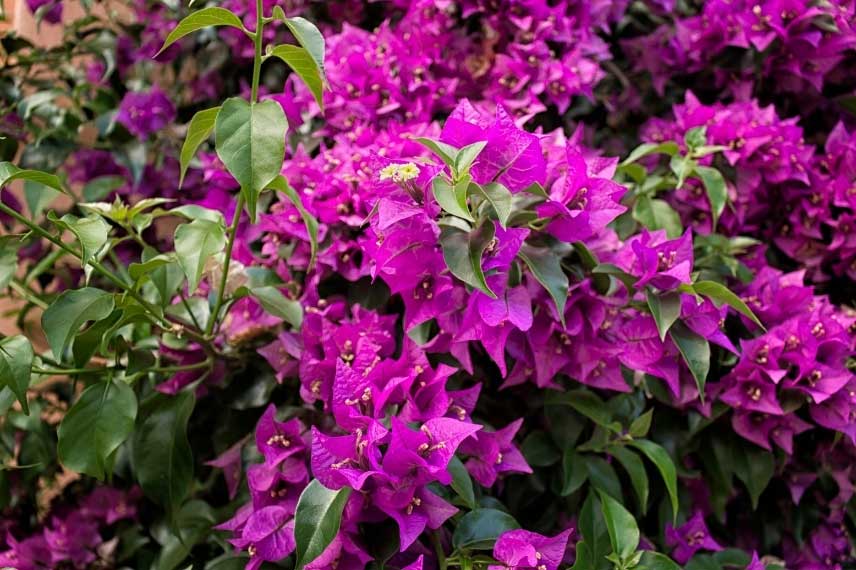
Bougainvillea glabra ‘Sanderiana’
For further reading
- Discover our stunning varieties of bougainvillea
- Need help with your choice? Follow the guide to find out which bougainvillea to plant according to your region
- Get inspired to dress your walls and pergolas with an unusual climbing plant!
- Our collection of Mediterranean climbers features the best species and varieties, discover them!
- Find our tips on pruning and training a bougainvillea
- Subscribe!
- Contents
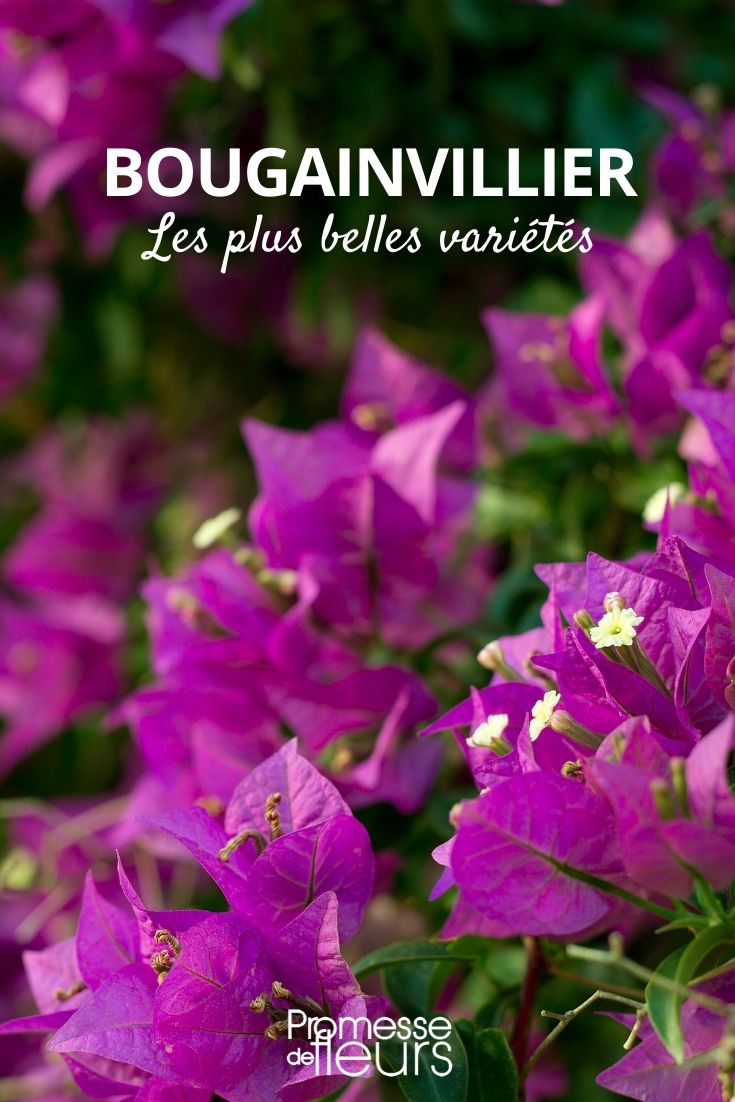































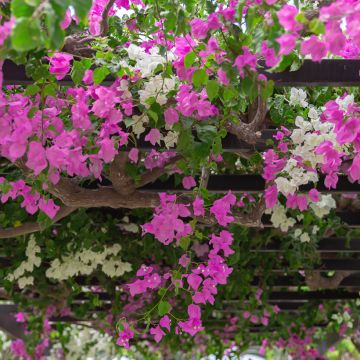
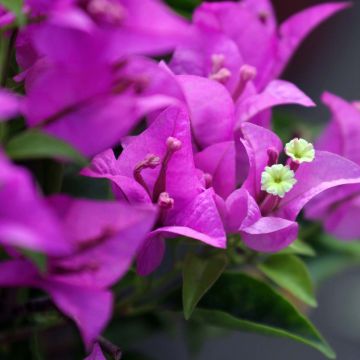


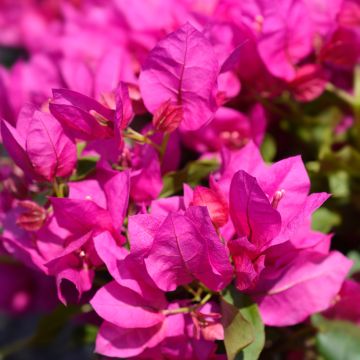


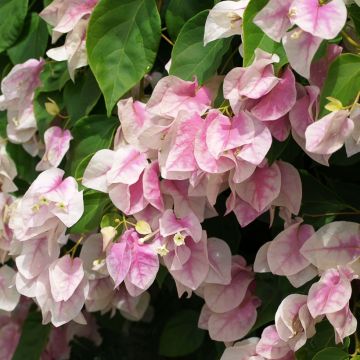
Comments